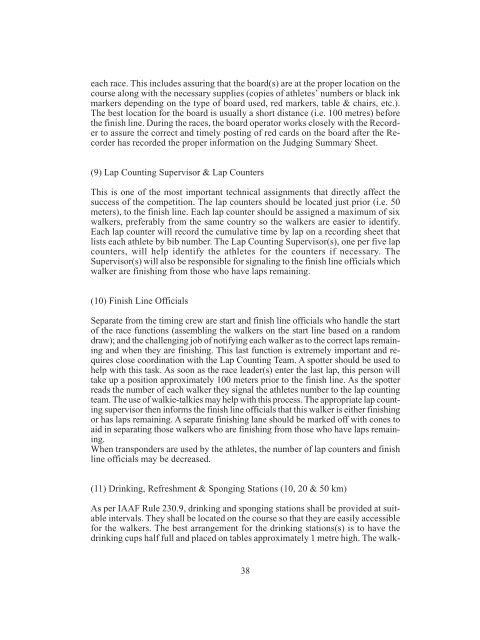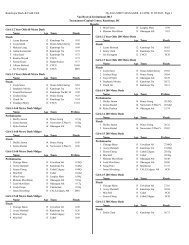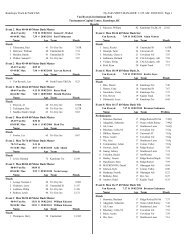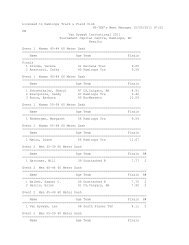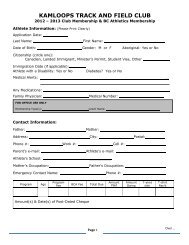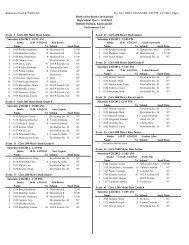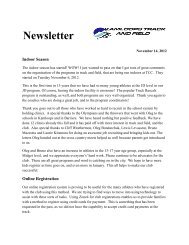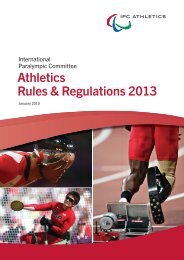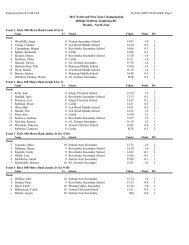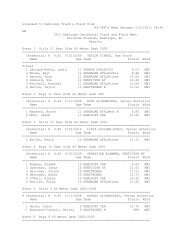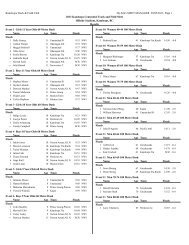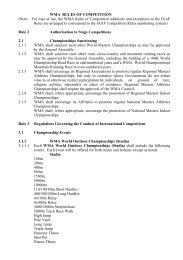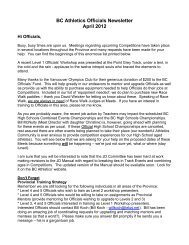Una guía para Jueces, oficiales, entrenadores y atletas
Una guía para Jueces, oficiales, entrenadores y atletas
Una guía para Jueces, oficiales, entrenadores y atletas
You also want an ePaper? Increase the reach of your titles
YUMPU automatically turns print PDFs into web optimized ePapers that Google loves.
each race. This includes assuring that the board(s) are at the proper location on the<br />
course along with the necessary supplies (copies of athletes’ numbers or black ink<br />
markers depending on the type of board used, red markers, table & chairs, etc.).<br />
The best location for the board is usually a short distance (i.e. 100 metres) before<br />
the finish line. During the races, the board operator works closely with the Recorder<br />
to assure the correct and timely posting of red cards on the board after the Recorder<br />
has recorded the proper information on the Judging Summary Sheet.<br />
(9) Lap Counting Supervisor & Lap Counters<br />
This is one of the most important technical assignments that directly affect the<br />
success of the competition. The lap counters should be located just prior (i.e. 50<br />
meters), to the finish line. Each lap counter should be assigned a maximum of six<br />
walkers, preferably from the same country so the walkers are easier to identify.<br />
Each lap counter will record the cumulative time by lap on a recording sheet that<br />
lists each athlete by bib number. The Lap Counting Supervisor(s), one per five lap<br />
counters, will help identify the athletes for the counters if necessary. The<br />
Supervisor(s) will also be responsible for signaling to the finish line officials which<br />
walker are finishing from those who have laps remaining.<br />
(10) Finish Line Officials<br />
Se<strong>para</strong>te from the timing crew are start and finish line officials who handle the start<br />
of the race functions (assembling the walkers on the start line based on a random<br />
draw); and the challenging job of notifying each walker as to the correct laps remaining<br />
and when they are finishing. This last function is extremely important and requires<br />
close coordination with the Lap Counting Team. A spotter should be used to<br />
help with this task. As soon as the race leader(s) enter the last lap, this person will<br />
take up a position approximately 100 meters prior to the finish line. As the spotter<br />
reads the number of each walker they signal the athletes number to the lap counting<br />
team. The use of walkie-talkies may help with this process. The appropriate lap counting<br />
supervisor then informs the finish line officials that this walker is either finishing<br />
or has laps remaining. A se<strong>para</strong>te finishing lane should be marked off with cones to<br />
aid in se<strong>para</strong>ting those walkers who are finishing from those who have laps remaining.<br />
When transponders are used by the athletes, the number of lap counters and finish<br />
line officials may be decreased.<br />
(11) Drinking, Refreshment & Sponging Stations (10, 20 & 50 km)<br />
As per IAAF Rule 230.9, drinking and sponging stations shall be provided at suitable<br />
intervals. They shall be located on the course so that they are easily accessible<br />
for the walkers. The best arrangement for the drinking stations(s) is to have the<br />
drinking cups half full and placed on tables approximately 1 metre high. The walk-<br />
38


